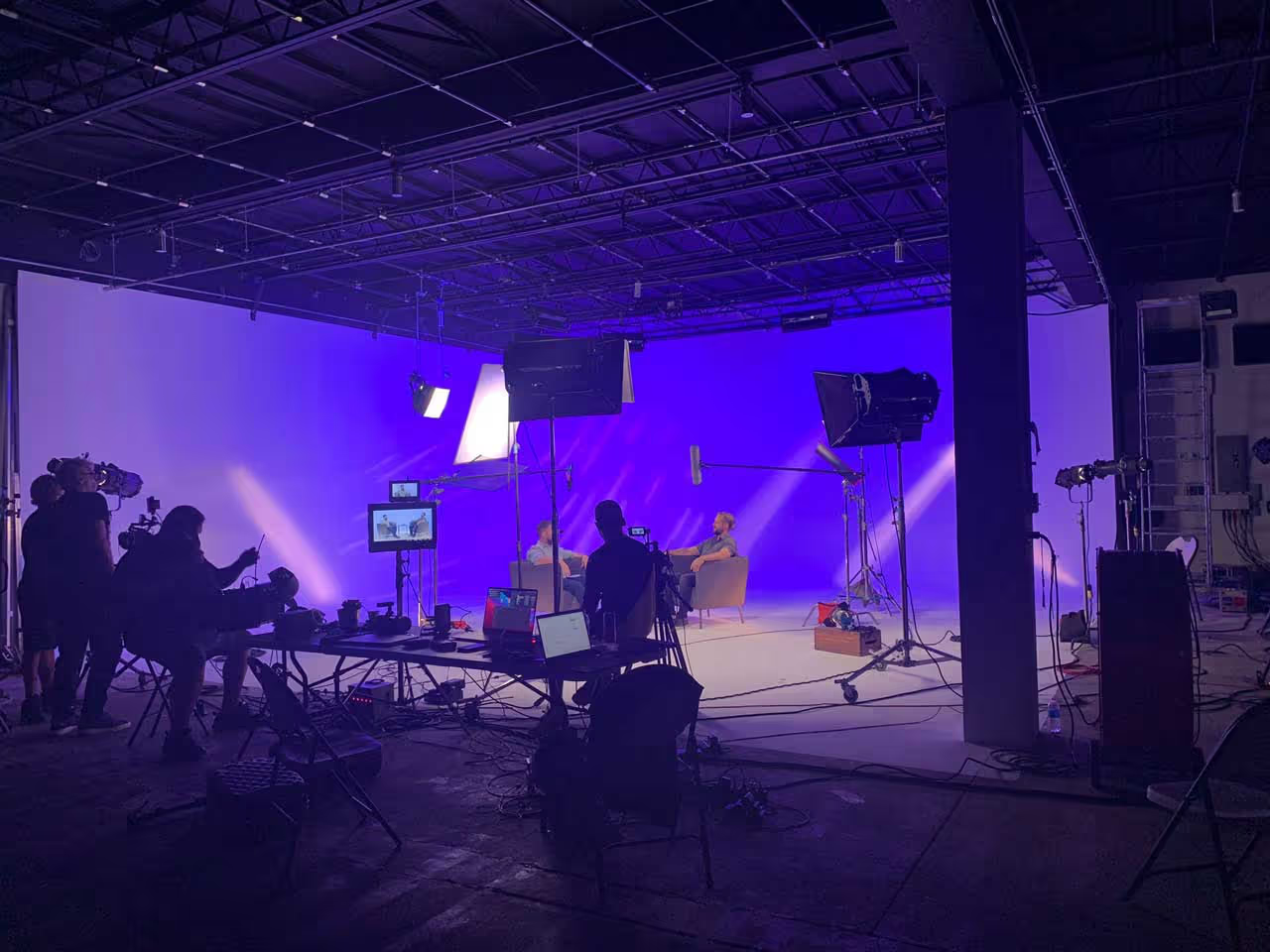Table of Contents
Why Customer Onboarding Videos Transform First Impressions
First impressions matter. In the business world, a positive initial experience can pave the way for a strong, lasting customer relationship. Customer onboarding videos offer a powerful way to engage new users and showcase value right from the start. They provide a dynamic and engaging welcome, guiding customers through your product or service and shaping their initial perception.
The Power of Visual Learning
Imagine assembling furniture. Would you prefer to decipher a lengthy manual or watch a short, helpful video? Most people would choose the video. Visuals are processed faster than text. Customer onboarding videos leverage this by presenting information in an easily digestible format, perfect for today's audiences. This results in better understanding and faster product adoption.
Reducing Support Ticket Volume and Increasing Retention
Customer onboarding videos can also significantly lighten the load on your customer support team. By proactively answering common questions through video tutorials, you empower users to find solutions independently. This frees up valuable time and resources for your team, while simultaneously improving the customer experience through instant support. Effective onboarding is also directly linked to better long-term customer retention. Confident users are more likely to stay.
Onboarding videos have become essential for enhancing the initial customer experience. 97% of people find video effective for welcoming and educating new customers. This widespread acceptance highlights video's potential to boost satisfaction and retention. Videos reduce the need for support by offering clear product instructions. They also increase engagement by showcasing features users might otherwise miss. Companies like Asana use onboarding videos to simplify the learning process, saving users time and frustration, and ultimately reducing churn.
Building Trust and Fostering Connection
Customer onboarding videos offer a unique opportunity to build trust and connect with your audience on a deeper level. Showcasing your brand’s personality and values through engaging visuals and storytelling, you create a more human and welcoming experience. This builds rapport and establishes a positive relationship from day one. This personal touch can set you apart from competitors and strengthen customer loyalty. Through well-crafted onboarding videos, you not only educate but also inspire, creating a positive impression that lasts throughout the customer lifecycle.
Crafting High-Converting Customer Onboarding Videos

Creating effective customer onboarding videos isn't just about explaining your product. It's about crafting an engaging experience that turns passive viewers into active, confident users. This involves carefully considering video structure, visuals, and storytelling. These elements ensure your onboarding video sets the stage for long-term customer success.
Structuring Your Onboarding Video for Maximum Impact
The structure of your video is critical for keeping viewers engaged and delivering information effectively. Start by outlining the key takeaways you want users to learn. Think of it like a movie trailer; highlight the most exciting parts of your product first to grab attention.
Then, guide viewers through the essential steps to get started. This structured approach ensures users aren't overwhelmed and can retain important information. A clear and logical flow makes the learning process smoother and more enjoyable for new customers.
Visual Hierarchy and Engaging Visuals
Visual hierarchy is about arranging visual elements to guide the viewer's eye. Use clear, concise on-screen text, highlighting key features and actions. Incorporate visual cues, like arrows and highlights, to direct attention during product demonstrations.
This helps viewers easily follow along and understand the functionality. Well-designed visuals enhance the learning experience and make the information more accessible.
Balancing Information
One common mistake is including too much information in a single video. This can overwhelm viewers and result in lower completion rates. Instead, create concise videos focused on essential information.
For example, short videos under a minute can be highly effective, holding the attention of 68% of viewers. This underscores the importance of well-crafted video content that quickly conveys key information. Applications with a solid onboarding experience, including video, see a 50% higher retention rate.
Let's take a look at the impact of video length on key metrics:
The table below shows the relationship between video length and key performance indicators.
As you can see, shorter videos tend to have higher completion rates, leading to better information retention and user activation.
Storytelling and Brand Personality
While clarity and conciseness are essential, don't forget your brand's personality. Use a friendly, encouraging tone, and consider storytelling to make the onboarding experience more relatable.
This builds a stronger connection with users and reinforces your brand identity. A well-crafted onboarding video should not only educate but also inspire, exciting viewers to use your product.
Aligning Customer Onboarding Videos With User Expectations
Today's users expect a seamless and engaging onboarding experience. Understanding their needs and preferences is key, particularly when creating customer onboarding videos. By aligning your video content with these expectations, you can drastically improve user satisfaction and encourage product adoption.
Understanding Modern Customer Demands
Modern customers lead busy lives and appreciate efficiency. They want clear, concise information without unnecessary jargon or complicated explanations. This is precisely where customer onboarding videos shine. Videos deliver essential information quickly and effectively, perfectly suited for shorter attention spans.
Personalization is also highly valued. Consider segmenting your audience and developing targeted video content that addresses their specific needs and pain points. For example, a video for new users might focus on basic features, while a video for experienced users could showcase advanced functionalities.
Identifying Content for Video vs. Text
Not every piece of information is best suited for video. Progressive disclosure, a strategy for managing information complexity, can guide your content choices. This involves presenting information step-by-step, beginning with the essentials and gradually introducing more complex details.
- Video: Complex processes, product demonstrations, key features, and welcome messages are all enhanced by the visual clarity of video.
- Text: Simple instructions, reference materials, and in-depth documentation are often more effective in text-based formats, allowing users to easily refer back to them.
This targeted approach ensures you're using the right medium for the right message, optimizing the effectiveness of your onboarding process.
Gathering Actionable Feedback and Continuous Improvement
Feedback is crucial for ongoing improvement. Implement methods for gathering user feedback on your customer onboarding videos. This might include surveys, in-app feedback forms, or analyzing video engagement metrics like watch time and drop-off rates.
This data-driven approach enables you to refine your videos over time. This ensures they continue to meet user expectations and deliver the best possible results. By actively seeking feedback, you demonstrate a commitment to user satisfaction and build a more user-centric onboarding experience.
Production Tools That Make Customer Onboarding Videos Shine

Creating professional onboarding videos doesn't require a massive budget or a team of experts. Plenty of accessible tools empower teams to produce engaging content, often rivaling professionally produced work. This section explores those tools, offering comparisons to help you find the best fit for your needs. You'll be creating high-quality onboarding videos efficiently in no time.
AI-Powered Editing Tools For Streamlined Production
Modern video editing software often includes AI-powered features that can significantly speed up the production process. For instance, some tools offer automated transcription and captioning, saving you valuable time and effort. AI can also assist with scene detection and smart cuts, simplifying the editing process and contributing to a more polished final product.
These tools are a great asset for teams aiming to produce top-notch customer onboarding videos quickly.
Screen Recording Solutions For Effective Demonstrations
Clear product demonstrations are essential for effective onboarding. Using specialized screen recording software like Camtasia allows you to capture high-quality video of your product in action, often enhanced with features like cursor highlighting and annotations.
This allows you to guide users through complex processes step-by-step, improving understanding and encouraging quick product adoption. Some platforms even integrate with popular project management tools, simplifying workflow and promoting team collaboration.
Platforms For Seamless Team Collaboration
Producing onboarding videos is often a team effort. Platforms designed for collaborative video production offer helpful features, such as shared editing timelines, version control, and feedback tools. This facilitates efficient teamwork, even when team members are in different locations.
This streamlined collaboration improves the review and approval process, ensuring consistent branding and timely video delivery.
Choosing The Right Tool For Your Needs
The table below compares several popular tools, summarizing their key features and pricing.
To help you choose the best tools, we've compiled a comparison table:
Onboarding Video Creation Tools Comparison: A comparison of popular tools for creating customer onboarding videos across different budget levels and complexity needs.
This table offers a quick overview of various video production tools, from simple screen recording and editing software to more advanced professional-grade options. Considering your budget, technical expertise, and specific project needs will help you make the right choice.
Investing in the right tools is a crucial step toward optimizing your onboarding process and increasing user engagement.
Measuring Customer Onboarding Video Performance
Creating compelling onboarding videos is only half the battle. Measuring their effectiveness is just as crucial. How do you know if your videos truly engage new users and drive results? This section offers a framework for measuring and optimizing your customer onboarding video performance, based on best practices.
Key Metrics for Onboarding Video Success
While views offer a glimpse of reach, they don't reveal the full picture. Focus on metrics reflecting engagement and correlating with business outcomes. These key performance indicators (KPIs) are essential:
- Play Rate: The percentage of visitors clicking "play." A low play rate might indicate issues with video placement or the thumbnail.
- Watch Time/Average View Duration: This shows how much of your video viewers are watching. Short durations could mean your content isn't engaging or is too long.
- Completion Rate: The percentage of viewers watching the entire video. This metric is crucial for onboarding, indicating full information absorption.
- Engagement Actions: Track clicks on interactive elements within the video, such as calls-to-action or links. This reveals viewer interest.
- Conversion Rate: The percentage of viewers completing a desired action after watching, such as signing up for a trial.
For example, a high completion rate with a low conversion rate suggests engaging content, but a weak call to action.
Implementing Tracking Across Platforms
Ensure consistent tracking across platforms hosting your videos, including your website, social media, or learning management systems (LMS). Use video analytics dashboards to monitor KPIs and gain a comprehensive view.
Also, use UTM parameters in video URLs to track traffic sources and understand which channels drive the most engaged viewers. This informs your distribution strategy.
A/B Testing for Continuous Improvement
Regular A/B testing helps refine your onboarding videos. Test different versions, varying factors such as:
- Video Length: Compare shorter, focused videos with longer versions.
- Call to Action: Experiment with different phrasing, placement, and design.
- Visuals and Messaging: Test different introductory hooks, storytelling, and visual styles.
Analyzing performance identifies what resonates with your audience and optimizes content for maximum impact. This ensures continuous improvement.
Connecting Video Metrics With Broader Business Goals
The ultimate goal of onboarding videos is to improve business results. Connect video metrics with broader success indicators:
- Time-to-Value (TTV): Measure how long it takes new users to experience your product's core value. Effective videos should shorten this.
- Feature Adoption Rate: Track how often users engage with key features. Videos can highlight these and encourage adoption.
- Long-Term Retention: Monitor customer churn and identify correlations with video engagement. Strong onboarding can improve customer loyalty.
This approach focuses on the impact of videos on business outcomes, demonstrating the return on investment (ROI).
To enhance your onboarding experience with stunning visuals, consider partnering with Get Camera Crew for professional, high-quality video production.






